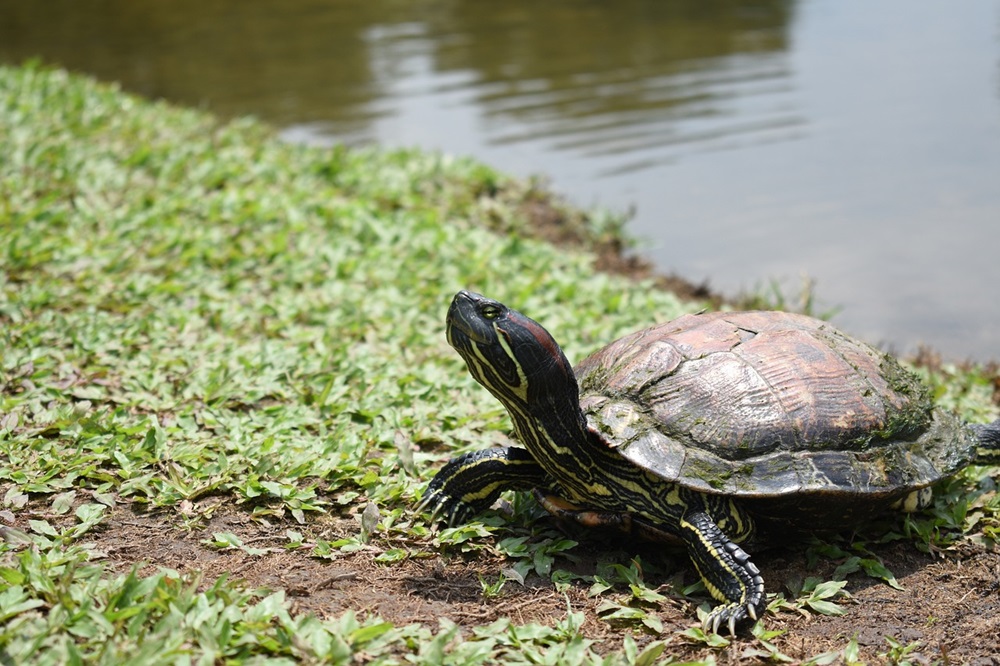
A new study, published in the journal One Health has suggested ways in which to prevent the spread of invasive alien species (IAS) into sensitive ecosystems caused by the pet and aquaria trade in the Caribbean.
This includes species such as red-eared sliders (turtles), catfish, Guinea pigs, rabbits, geese and even shark. Other species on the list are goldfish, cockatiels, dogs, and lovebirds.
The research is the first of its kind to use a One Health Invasive Alien Species Prioritization (OHIASP) method to examine the pet and aquaria trade in Barbados and the Organisation of Eastern Caribbean States (OECS).
The scientists from CABI, the University of the West Indies, and the Inter-American Institute for Cooperation on Agriculture (IICA), assessed seven Caribbean countries: Barbados, St. Lucia, Grenada, Dominica, St. Kitts and Nevis, St. Vincent and the Grenadines, and Antigua and Barbuda.
Barbados reported the highest annual import values for pets
Barbados reported the highest annual import values for pets (USD $371,604) and aquaria (USD $450,860) using data from 2016 to 2020. The species range was very narrow and likely a reflection of data collection systems. Trinidad and Tobago were the primary regional source for pet and aquaria imports.
In total, 35 IAS were chosen for prioritization. Based on their weighted score, prioritized IAS were ranked in order of relative importance using a one-to-five selection scale. A priority list of 13 IAS was identified from the pet/aquaria imported into Barbados and the OECS.
Naitram Ramnanan, CABI’s Regional Representative, Caribbean, and co-author of the paper, said, “This marks the first ever study using an OHIASP tool for examining, quantifying and ranking IAS risks in pet and aquaria trade pathways. This can assist zoonotic disease risk prioritization where necessary.
“Effective IAS management in the Caribbean requires multipronged approaches, data and information systems that integrate indigenous knowledge, leverage digital tools, and build community ownership, to overcome inherent regional vulnerabilities.”
Significant market demand for non-native species bred locally
The scientists say that there is a significant market demand for non-native species bred locally, which could drive illegal trade or increase local breeding efforts in the Eastern Caribbean.
In general, they stress, there are strict import processes and permits required for many species, indicating robust regulatory frameworks. The variety of pet species being imported in the OECS and Barbados reflects the different preferences of the consumers and includes fish, birds, and small animals.
They recommend that there is a need, with resource limitations, for effective systems to monitor, evaluate and assess risks associated with the pet and aquaria trade within the Caribbean to avoid deleterious impacts from IAS entry and establishment.
To mitigate the IAS threats posed by the pet and aquaria trade, the scientists say various measures can be implemented including increased veterinary border inspections, stricter animal care regulations, and prohibition of keeping certain species.
OHIASP tool can aid other Caribbean countries in prioritising IAS
The scientists argue that their OHIASP tool can aid other Caribbean countries in prioritising IAS from the pet and aquaria trade to improve IAS management efforts. They add that the OHIASP tool can be linked to One Health Zoonotic Disease Prioritization (OHZDP) tools to prioritise zoonoses that IAS can continue to an increased risk profile.
For example, a pet Eurasian bird species that becomes an IAS then established within the Caribbean, may serve as potential amplifying hosts for West Nile virus (WNV), increasing the risk potential for WNV outbreaks.
Mr Ramnanan added, “This study highlights the importance of using multipronged One Health approaches in the Caribbean, incorporating indigenous expert knowledge, digital tools, and community ownership to achieve sustainable outcomes for IAS management in Barbados and the OECS.”
Additional information
Main image: The red-eared slider (Credit: Pixabay).
Full paper reference
Kirk O. Douglas, Diana Francis, Naitram Ramnanan, A landscape analysis and one health approach to an invasive species pathway: Pet and aquaria trade in the Eastern Caribbean, One Health, Volume 19, 2024, https://doi.org/10.1016/j.onehlt.2024.100942
The paper can be read open access here.
Funding acknowledgement
The IAS research and the IAS workshop in St. Kitts and Nevis were funded by Global Environment Facility (GEF) and prepared for the CABI project activity: 1.1.2.2: Risk Assessment for Horticulture Trade developed and published under the project “Preventing the COSTS of IAS in Barbados and the OECS.”
Related News & Blogs
Invasive alien species is biggest threat to biodiversity and livelihoods in Caribbean, according to new field guide
Invasive alien species (IAS) explored in a CABI-published book pose the biggest threat to biodiversity, crop and/or livestock production, human and/or animal health, and economic development in the Caribbean. These include rats, cats, mongoose and monk…
12 June 2024




